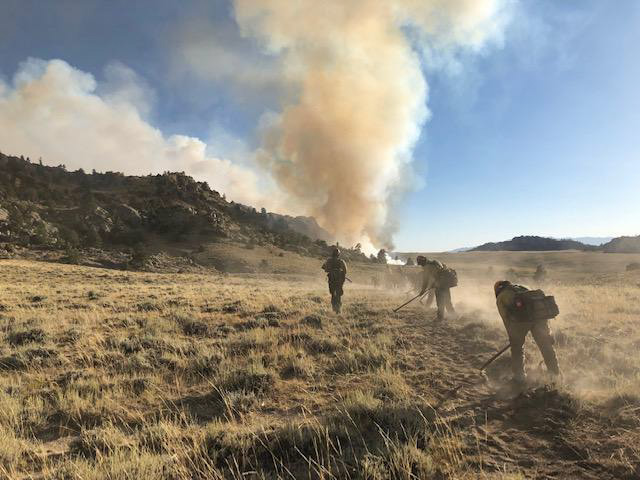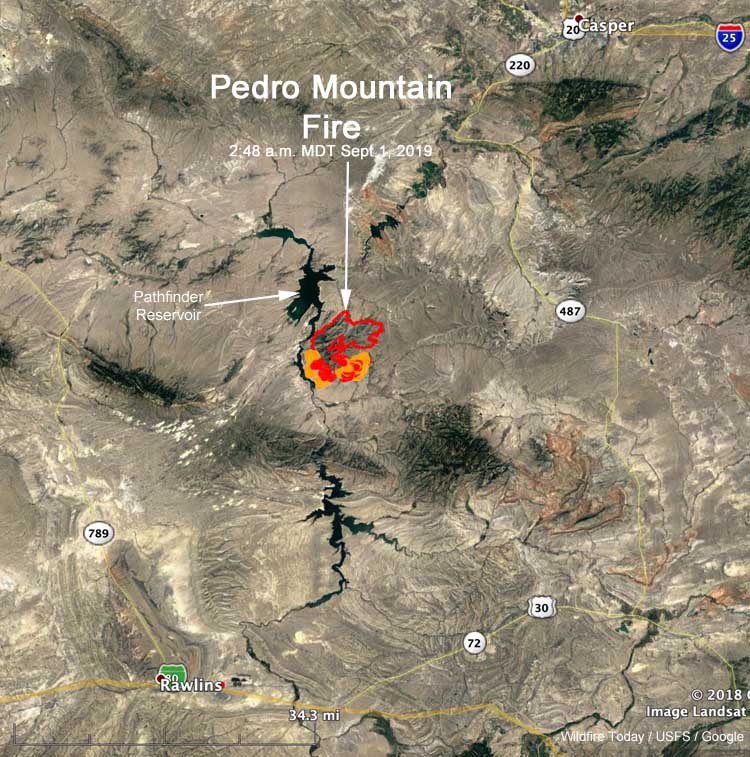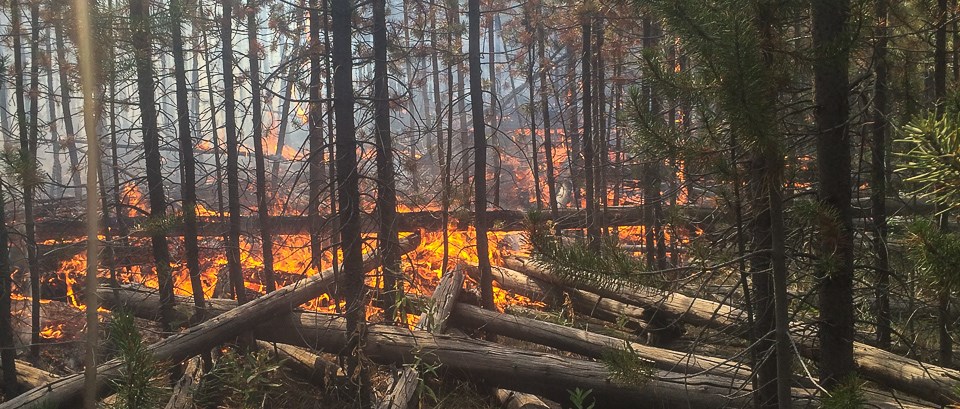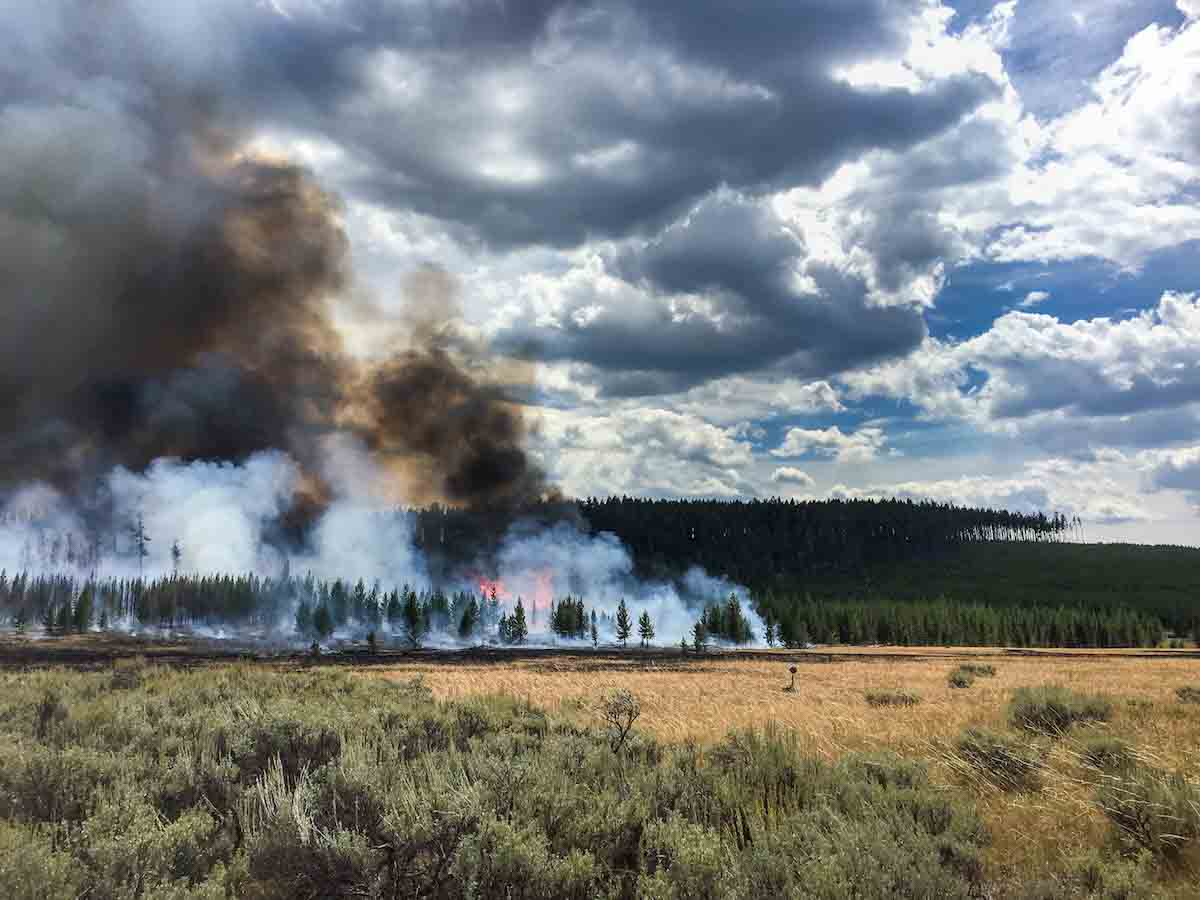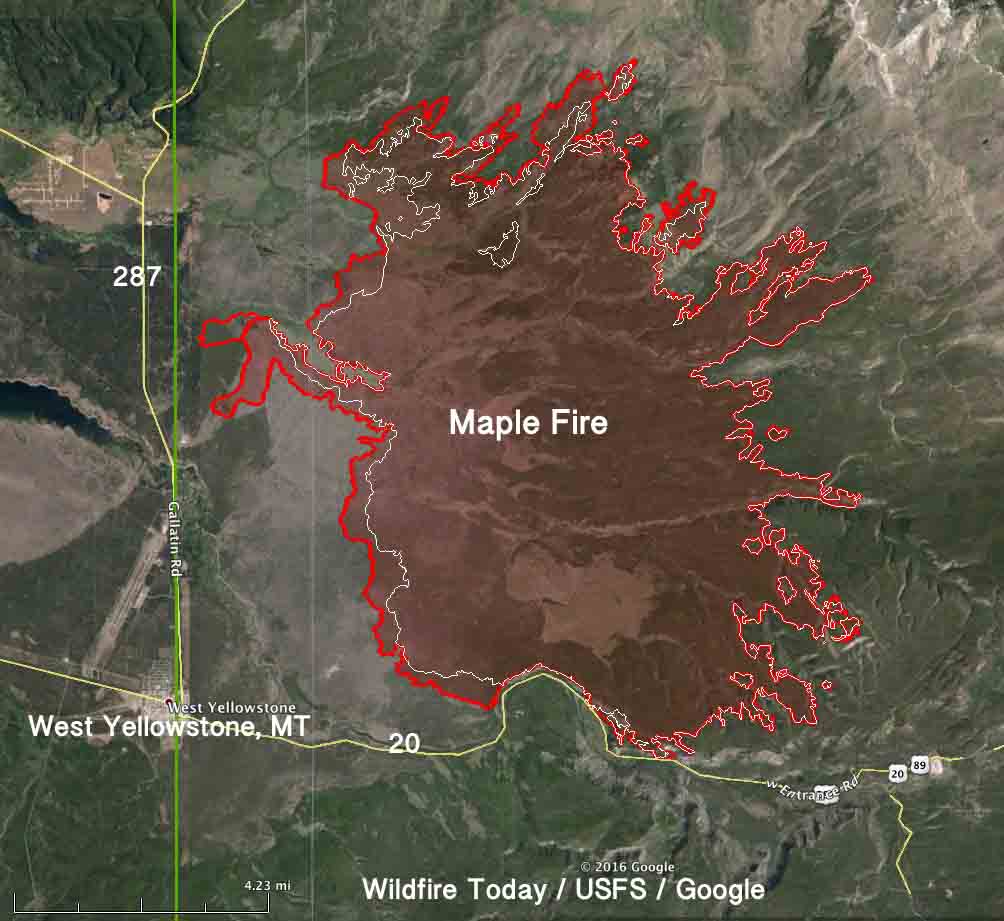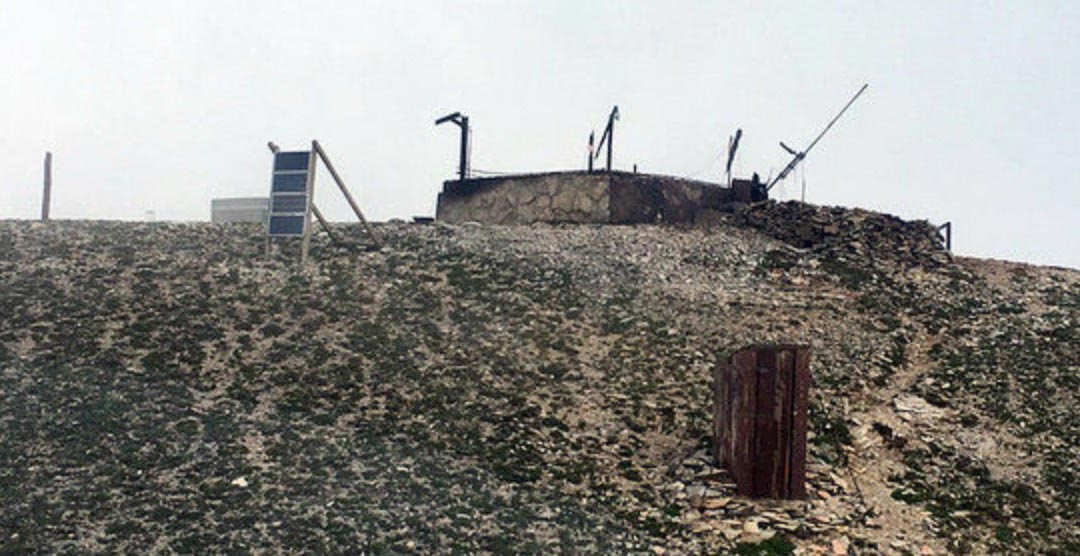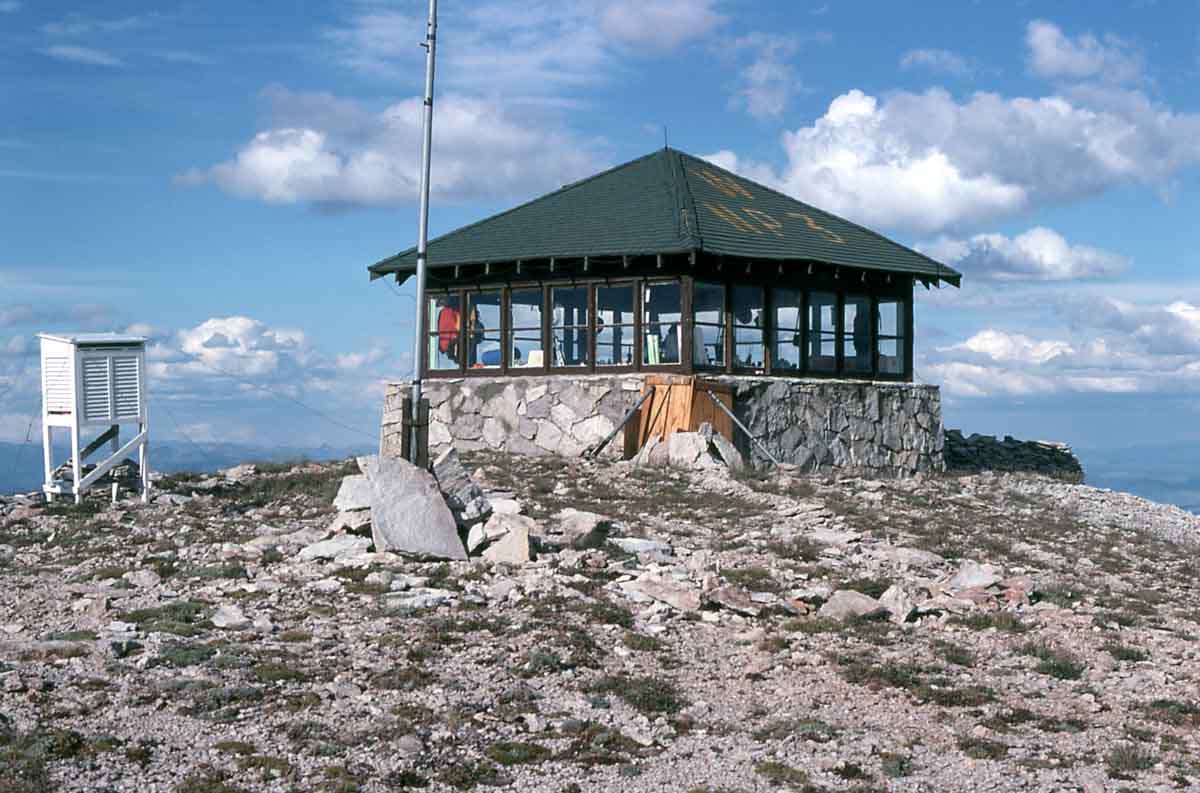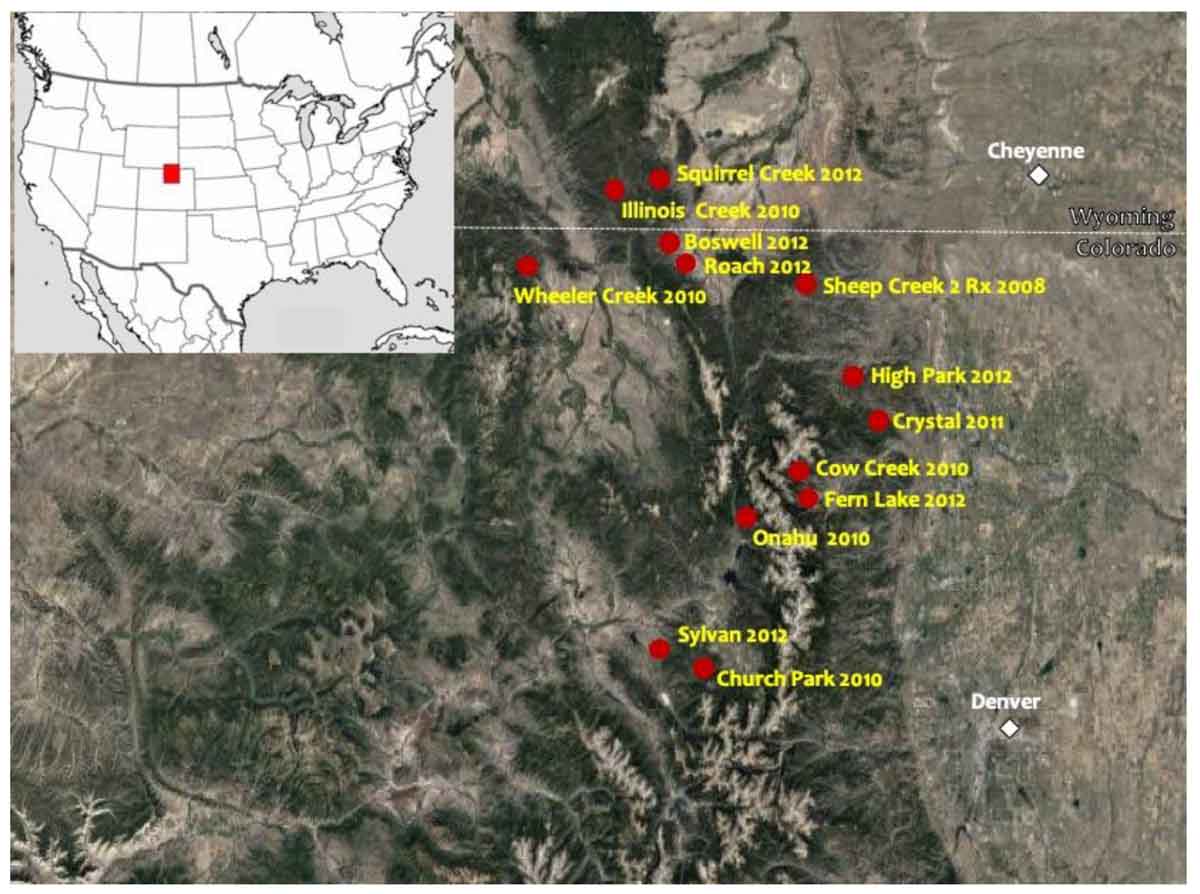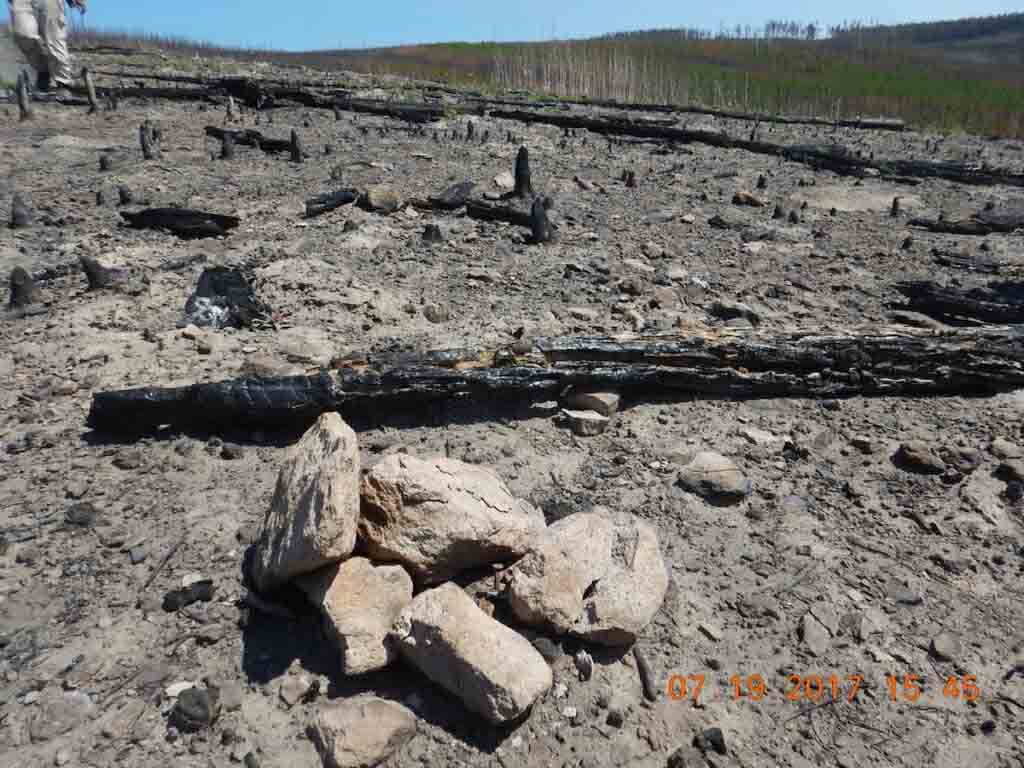(UPDATED at 7 p.m. MDT September 4, 2019)
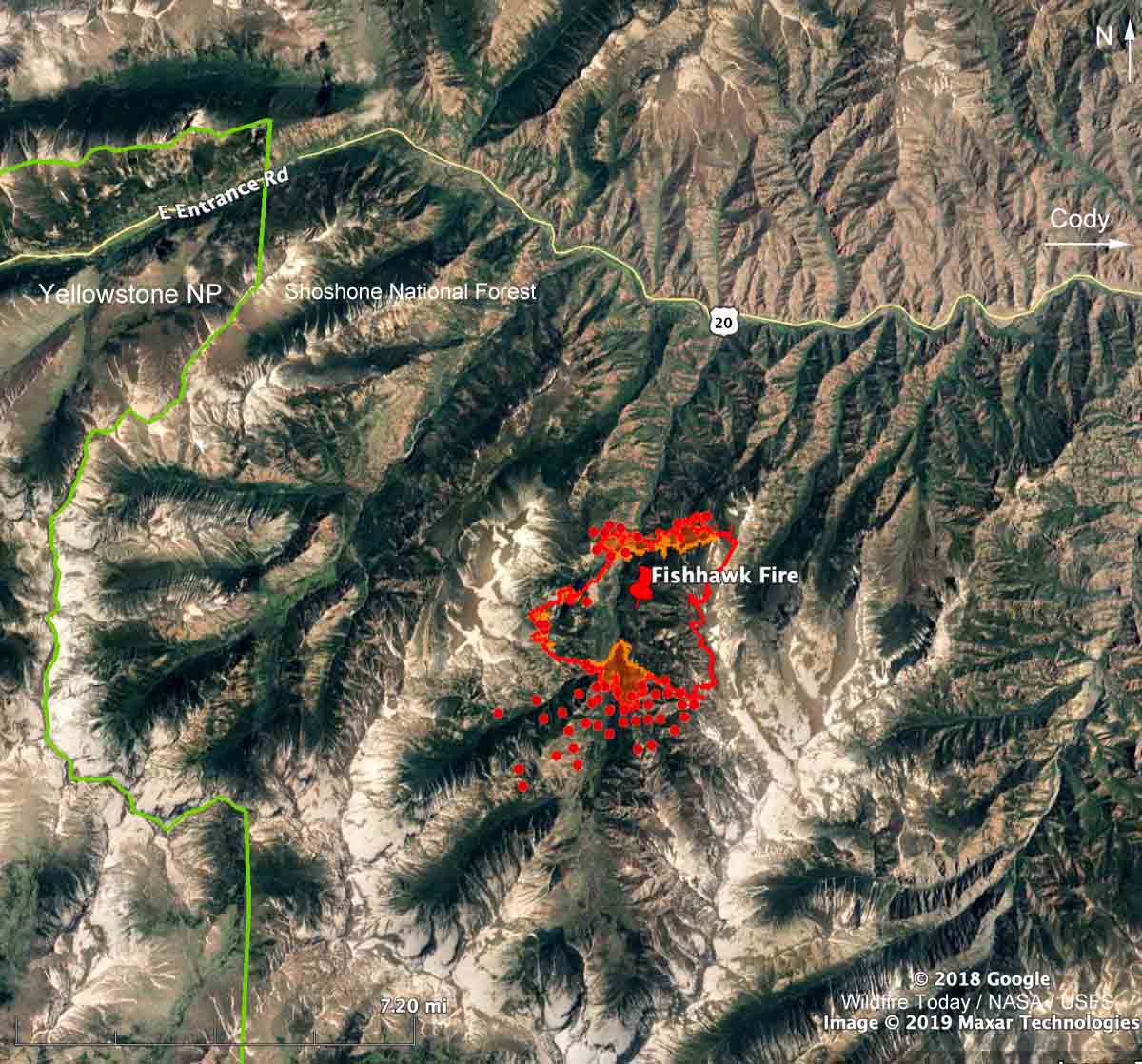
The red dots on the map above represent heat detected on the Fishhawk Fire by a satellite at 2:12 p.m. MDT September 4, 2019. It is uncertain if they indicate actual surface spread of the fire toward the southwest, or if the heat was detected in an intense convection column in the atmosphere above the fire.
The smoke in the upper atmosphere was blowing off to the east, but perhaps lower level local winds, an up-canyon breeze, could have pushed the smoke and the fire to the south. During the fixed wing mapping flight at 8:19 p.m. on September 3 there was intense fire activity on the south edge of the fire.
(To see all articles on Wildfire Today about the Fishhawk Fire, including the most recent, click here.)
The Fishhawk Fire is 38 miles west of Cody, Wyoming, six miles east of the east entrance to Yellowstone National Park.
Scroll down to see more maps and information.
(UPDATED at 1:42 p.m. MDT September 4, 2019)

A mapping flight Tuesday night found that the Fishhawk Fire 38 miles west of Cody, Wyoming spread up to about one-quarter mile in all directions Tuesday except on the east side where it has reached a steep hog-back ridge 10,000 to 11,000 feet above sea level.
A Type 2 Incident Management Team will in-brief Wednesday prior to assuming command of the fire.
The resources assigned to the fire as of Tuesday evening included no hand crews, 3 engines, and 3 helicopters for a total of 29 personnel.
The 4,581-acre fire so far is confined to a north-south drainage that has a similar high elevation ridge on the west side. The fire is not being fully suppressed, so it is possible that firefighters are expecting the 10,000-foot ridges with light fuels to contain the perimeter on the east and west sides.
About 3.5 miles to the north is a highly-traveled highway, 14/16/20, leading from Cody to the east entrance of Yellowstone National Park. If it crosses the highway it would be burning on primarily south-facing slopes which would normally be very conducive to additional fire spread. However it would most likely be burning in the footprint of the 2008 Gunbarrel Fire that burned at least 67,000 acres. The light vegetation in the fire scar would present less resistance to control. Like the Fishhawk Fire, the Gunbarrel Fire was not suppressed. On August 15, 2008 the Shoshone National Forest had a plan for the maximum manageable area to cover 416,000 acres.
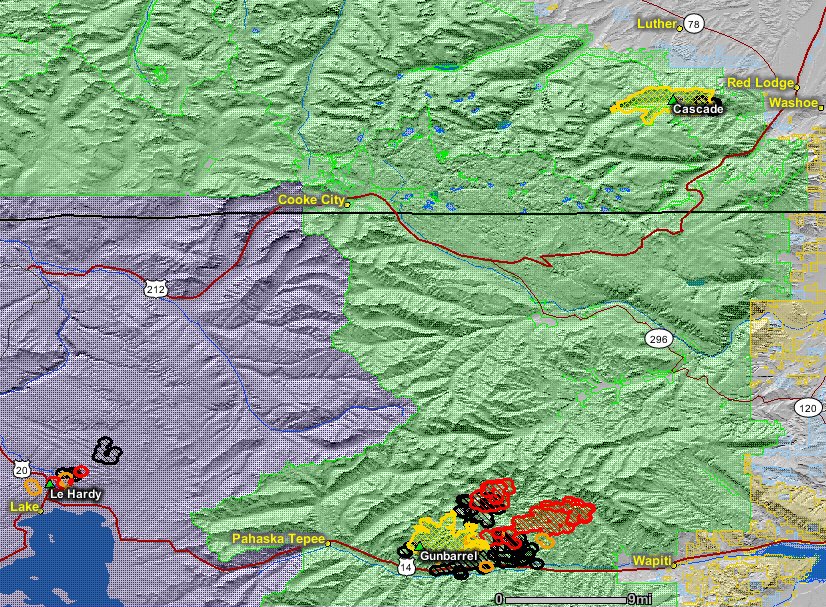
In their long term plans, fire managers on the Fishhawk Fire should plan for extreme winds. On August 28, 2008 the Powell Tribune wrote this about the Gunbarrel Fire :
“The winds are just howling,” Clint Dawson said Wednesday, describing the wind’s rate around the Gunbarrel Fire.
Dawson is the zone fire manager for Shoshone National Forest.
In the valley — in the vicinity of the newly-relocated Gunbarrel Fire camp at Buffalo Bill State Park — the wind was gusting to 40-60 mph in the early afternoon on Wednesday. The new incident command camp is just above the reservoir west of Cody.
An aircraft flying over the fire Wednesday reported winds reaching 115 mph at 11,000 feet, Dawson said.
The fire was spotting on the east side of 12,000-foot high Trout Peak, according to an incident report.
Continue reading “Fishhawk Fire grows to over 4,500 acres west of Cody, Wyoming”

